Snappy massage therapists used to make fun of “skin massage”, using it as a stand-in for a massage of no connection, a mere application of oil, an unmemorable massage of no consequence.
But hey, snappy aside, there is a really awesome aspect to skin massage worth thinking about – and doing.
Here we are dealing not with lilting pressure, but often no pressure, and a term perhaps last heard on whaling ships: furling.
Furling, really? Yeppers-peppers.
Sometimes a pain complaint from a client is the ghost of the past. An imprint still there long after the trauma is gone. If lucky, the massage therapist may feel it in the easiest structure to touch and modify, the skin.
Once in a while I find one of these morphed patches of skin, right at the beginning of a massage when I am scanning and feeling the area of complaint. It might be over a stuck infraspinatus, a wedged down trapezius, or a plastered temporalis.
When I find these spots, I gently- heed that word – gently try to pick up the skin between thumb and forefinger, skin only, and see if the pain disperses. Sometimes the planets align, and the pain goes whoosh! The client may think it was magic (not a bad way thought when it comes time to re-book) and it certainly can seem that way. Of course it is not, just another expression of starting at the beginning and checking layer by layer of the structures involved in a pattern of pain or tension.
If the skin won’t open to lifting touch, it is time to go on to gentle rocking, range of motion, itsy-bitsy circles, anything to remind the skin that it is supposed to move moderately independent of the structures below. Sometimes that is the key, and the skin releases.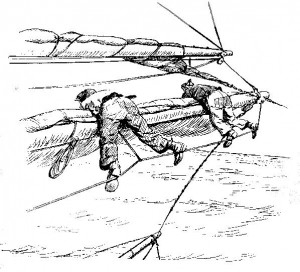
If it does not let go, it puts the massage therapist on the ship deck with the whaling sailors. We probably all furl, but perhaps don’t call it that because we drop words unique to the 19th century. But I like antiques, and this antique tells the story best. To furl, we pick up all of the portion of a sail, bunch it up and smooth our bunch before we seek to add more.
Massage furling is picking up a bit of skin, with a bit of adipose, and possibly a bit of connective tissue and muscle, and gently rolling it to smooth and open the adhesions.
Reminder time, this is a gentle technique. One of my buddies did this as a pinch, a locking pliers kind of pinch, which made me levitate, and wouldn’t let go until I came back down to the table. Fun amongst therapist friends, but zooming across the pain threshold will lose you most clients. Gentle takes the day.
It’s a cool way to begin a massage with first relieving the pain, then following with a Swedish or mixed technique massage to address the entire body.
Well, call me Ishmael. Skin massage has some purpose too!
Category Archives: Touchy Situations
Therapeutic Massage?
My massage client had gone to a fancy resort spa with an extraordinary view of the ocean. The spa was world-class. The services were expensive, the atmosphere somewhat reminiscent of a place where Roman emperors might have gone for a holiday.
How was your massage? I asked him when the holiday was over.
I had the guy they said was the best there, my client said, and I probably had the worst massage of my life.
Okay, I was not-so-secretly delighted that the fancy place didn’t measure up. But what was wrong with the massage? Shouldn’t it be pretty good if not better than average?
My client thought so. His masseuse didn’t ask any questions and spent 80 minutes gliding his hands and forearms over his body, impersonal and disconnected. I asked him afterwards why he didn’t work more on my bad spots, my client said. The guy told me oh, you wanted a therapeutic massage. Remind me next time.
Yowza. Great moments in customer service. Of course there would be no next time. I felt bad for my client, worse for my profession. What had gone wrong here? Why would a supposed deep-tissue massage turn into an oil basting? Even more important, why would there be a difference if my client had spoken up and asked for a “therapeutic” massage?
Unimpressed, yes, but it gave us both a moment to consider what a therapeutic massage means. I have been doing massage for 21 years. My client is a connoisseur, having had two to three massages a week for a good 40-plus years.
The person we couldn’t quiz was the spa therapist. Don’t know if he was hung over, injured, overworked or just uncaring. Maybe he didn’t like working on old guys. Maybe he was a Johnny-one-note with a recipe for conserving energy. The great unknown.
Either way, he had insured that my client would never get a massage from this guy ever again. And my client was soured on the resort, too.
To my way of thinking, all massages are therapeutic, he said.
I could not agree with him more. I’ve had great massages from experts to the humble, self-taught therapists. The names of the massages did not matter. The caring connection matters most.
Massage Clients Need Training, Too
Most massage therapists charge by their time spent in a session, so dealing with client cancellations and no-shows is a particularly dear subject.
Big massage businesses just put their policies out there: 24-hour cancellation or full charge for the missed session. No appointment without a credit card to “guarantee a reservation.” It is a survival tactic that keeps the bills paid.
But what happens when the massage is not part of a big edifice of business complete with a receptionist to state the policy? Massage is a client-based business, after all. Can you afford to alienate a client for a missed appointment? Can you nicely charge folks for services not rendered? Is a cancellation policy a must or a risk for the small massage practice or clinic?
Those questions are an excellent place to start when considering your practice and its future. But keep in mind that massage therapists tend to be quiet, healing people who do not like confrontations, especially with those people seeking relief from stress. If you don’t have any policy stated up front, you may be in the position none of us healing people like: broke and behind in the bills.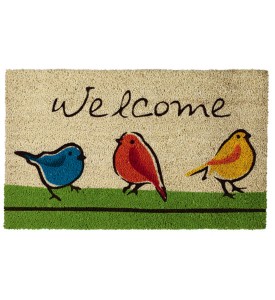
Aaargh. Yes, boundaries. Those darn things hopefully they talked about a lot in massage school. Is there a middle ground? Can a therapist walk the fine line between impersonal business policy and caring personal service? And still pay the bills?
This is a tough subject. Why? Because out there in the universe, most people are honest and upfront and understand that you need to be paid for your time. Then there are others who feel every nickel saved on a cancel fee is a personal victory attesting to their ability to avoid paying for anything. Yes, these are the legendary “cheap clients” who will turn your book into a sea of red ink if you are not careful.
Airlines and other big shops generally don’t give money back or reverse charges. They have found out the hard way that when a big biz is involved, many people perceive lying to not be charged or to get your money back is okay fibbing. Hey, the airlines can afford it, right? Well, not really. Big shops have to defend themselves.
The most important thing here is that if you have a “cheap client” with a great excuse is to get rid of them. A cancellation policy will do that. Otherwise these folks will suck your energy dry with no regrets.
Sometimes, yes it happens, the client is actually using the no-show as a way of firing you. It says in a big way that the client does not value the service. It means “cya.” Whatever is going on, this is the client you will be relieved to remove from your book. If that client ever calls again, they pay the no-show fee before getting a massage for their “emergency.”
In the big and small picture of customer service, I think it is important to respect your skills enough to have a firm cancellation policy. It can be full charge, half charge, whatever you want, but have it. And when a regular client who appreciates your work has a true emergency, it is okay to say “no charge.” That will be appreciated. After all, small business is personal, eh?
Trigger Me Mine
Massage therapists often enjoy showing clients something they can do on their own to relieve a chronic trigger point.
I do it too: “Here, try an old tennis ball and lean up against the wall. Just a little pressure, not your whole weight. Keep gentle pressure on the point for 10 to 15 seconds and then gradually lift.”
Most massage clients are surprised by what they can do one their own. But I am mindful of human nature. Like most therapists, I emphasize caution. “Avoid the urge to push too hard. You will be tempted. But too much pressure for too long can make the point come back much worse later. Always do this easy.”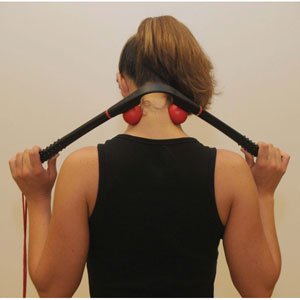
But humanity has its nature. And unfortunately, the numerous videos and self-treatment trigger point therapy books can be the road to perdition.
In the last two years I have had two clients pop in with Olympian trigger points that don’t respond to usual treatment. These trigger points want to stay and drive the clients crazy. What do these two clients have in common? They learned from a book or video how to do their own trigger points.
I had the advantage of learning trigger point therapy in school. The instructors and the books all cautioned students not to go crazy doing trigger points. One by one, every student in my class learned the hard way why trigger point therapy rules are good to follow. I found an especially precious trigger point in my temporalis. I worked it like crazy. Sure that when I erased it I would get relief. Within a few days, I had blinding migraines.
Clients don’t have that experience to help them believe in under-treating trigger points. I am so much more cautious about giving out old tennis balls now.
So what do you do with runaway trigger points? With these clients I tried a few different tactics. The first responded to active release techniques, but the monolith trigger point tended to return after a week or two. The second came around with dedicated, repetitious Swedish massage. I had to get the relaxation system back up and running in the nervous system. Funny, huh?
Finding and Keeping a Massage Office
Many therapists could benefit from the use of a massage office. Your own spot saves your back from wrangling tables at house calls. Your own spot also offers a great learning experience – how to develop skills to negotiate and keep an office, handle bills and make more income.
At some point in every massage therapist’s career the question comes up: Would you rather work for yourself or someone else? Would you rather handle the details to enjoy the freedom? Does it suit your style and your abilities? If it does not, are you interested in developing those skills?
Being able to answer those questions thoughtfully is just the start. I’ve pulled together some tips from a long career; some of it spent working for others and some for me.
Find the Time: Lots of therapists I worked with at spas and medical offices talked about getting their own place, but most never took their first steps. You have to plot out your time. Will you spend every Monday and Tuesday looking at places? What about collecting equipment and décor on the second-hand market? Will you be spending full retail for what you need?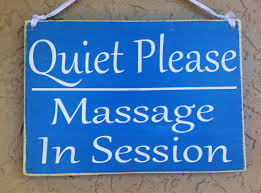
Study up: There are lots of online resources, most free, where therapists share their stories and advice. Tap in. I also looked at consumer columns on such things as commercial leases, tax advantages of an office and how to use your noggin to determine if potential officemates and/or landlords will be a good fit.
Work up you own agreement. If you find a place to share or rent full-time, you will get your best deal from your own hand. Sure, lots of landlords have their own agreements, but those agreements often turn back on themselves and nullify the very things you want or need. If you can use a one-page, simple agreement of your own design, you are better off.
Know your noise: Massage needs peace and quiet. The most common complaint I have heard from people is that they didn’t know the neighbors would be noisy. Or their landlord rented to a noisy neighbor just to fill space. You need some quiet neighbors, like accountants, other wellness offices, etc. Restaurants, machine shops and daycare are going to drive you crazy. Get it in writing that you won’t be subject to excessive noise incompatible with your business.
Have one-year’s rent in the bank before you leap. If your office is going to cost $500 a month or $5,000, you need to know you can pay for it while you figure out your business. Don’t rely on your hands to make paying clients magically appear.
Have more than one income stream available: If you run ads on Google, have a good website and your cousin the chiropractor sends you clients, you might make it. Most people forget to figure in the cost of marketing and keeping good referral sources in place.
It is also a frequent and fatal mistake to assume that if you leave your employer, your clients will follow. Most won’t. And your employer has paid money to get those clients in the door and the clients may just like it there just fine. How do you handle that? Trust me, it will take about 5 minutes for your employer to find out you are telling clients about your new venture. Ethics applies in business and in massage. Read up on how to leave gracefully. You don’t want to be one of those therapists who have to go to work for someone else a year later because you venture failed or created a lawsuit.
Massage Heals Whiplash
Massage at the Top of the Spine
People who have suffered whiplash are a good number of the clients in massage therapists’ practices. They seek relief from neck and shoulder pain, tension headaches, migraines and fatigue.
Massage does wonders for sore muscles of the neck and shoulder even years after a whiplash. It opens fused muscles, improves circulation of blood and lymph, and helps muscles re-learn movement.
Usually people with whiplash have been around to many different doctors and therapists. Often they have gone as far as they can with them and have decided to try massage to reduce symptoms.
And here is where the massage therapist can shine. Depending on whether the whiplash was from the rear, front, sides or diagonal directions, massage can open up clogs of adhesed muscles and return their natural movement.
Most have thick fibrous bands starting at the occipital ridge and ligamentum nuchae, and simple Swedish strokes – softly drawing away from the occiput and gliding back – can draw down the congestion.
Light to medium trigger point work on taut bands of the trapezius, splenii, scm’s and scalenes will further restore motion.
What I find, however, is that many clients tell me massage therapists shy away from their 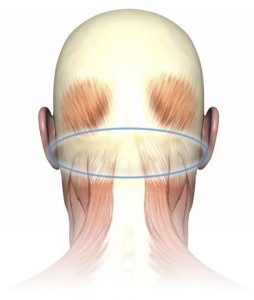 whiplash zones, even though this relatively simple work will bring much relief.
whiplash zones, even though this relatively simple work will bring much relief.
The whiplash survivor is not a china doll, but someone who needs the relief of massage.
Sometimes we are used to massaging the thick muscles of the shoulder area but clients start to cringe when we move up to the neck. It is a natural reflex to dig in to hardened tissue of the neck in order to loosen it. Actually, the opposite works much better. When I check the neck I soften my hands and do more soft molding strokes. I want the defenses to drop, not increase. When hands are soft, the tissue responds by allowing you to massage more deeply, but with gentleness.
Another common reflex is starting a stroke lightly and adding pressure as it proceeds. In effect, it is a grinding motion and a very unpleasant sensation to the client.
Instead, use the same medium pressure throughout the stroke. Go back and start the stroke again with slightly more pressure, repeating and adding slightly to the pressure with each glide, taking care not to depress the vertebrae. At the end of four to six strokes, the tissue will have been opened and drained. Success!
Drawing away from the congestion and doing light pressure techniques on the neck and upper shoulders will bring a great deal of relief without having to get into more complex techniques best left to intensive workshops. There is no reason to be afraid of making these areas worse. Your hands can’t go from 40 miles per hour to zero in one second!
A few who have had severe whiplash – and survived – they are the tough clients. Their symptoms are more serious – vertigo, sleep disruptions, fascia that forms nooses and restrictive loops over the years of compensating for severe imbalance.
I like to think I have great massage skills for all these folks, but I am cautious. Have neurologists or osteopaths with experience in these dysfunctions evaluated their injuries? Are they stuck or hyper-mobile? Have they had an increase in symptoms from additional injuries?
Massage and Life Learning
Massage Opportunities and Life Learning
Massage therapists have an excellent opportunity not only to meet extraordinary people but also to learn from them. I have met many, and they have taught me many things.
After 20 years in massage therapy, many of my wounds have healed through touch, and I have tried my best to listen and learn from my clients. They have given me many thousands of gifts I might have otherwise missed.
I am very thankful for the opportunity to help people feel better through massage. We have had more than a few laughs and cries along the way.
Rarely, I am blessed with outright advice. A client celebrating his 103rd birthday told me “Never sell land.” We both had a laugh over that one. I practice in Orange County, CA, which in the past 60 years has gone from a stagecoach rut to an economic powerhouse with its own Riviera.
Early in my career I saved my money from massage and bought my own little patch of OC on the advice of another client. Good move. Wish I had bought two.
The visceral and the spiritual, of course. One client told me God inspired him to recite a psalm to me. “I don’t know why it is this one,” he said. “It just came to me.” (psalm 6. Boy was that one on the mark.)
Sometimes clients tell me exactly what is on my mind. Occasionally, I have told them. “This is grief,” I said to a client one day as I palpated the sternum at the 5th and 6th rib. It was as if I first heard the words as I said them. Where did that come from? It started her recovery from a long-suppressed tragedy.
When I worked at a big spa, a client asked me why I did not have my own shop. I admitted to being afraid of the nuts and bolts of business, such as books. “If you can add and subtract, you can do books,” she said. She was right.
How do we express gratitude to our clients? And how do our clients thank us? By being real people, present in the moment, sharing our journeys. Merry Christmas and Happy Holidays to all.
Snappy Answers to Massage Questions…
Sometimes the best relief on a massage table is nice, firm Swedish efleurage. And with some clients, a quip is the best way to break the tension.
This is my homage to Mad Magazine’s Snappy Answers to – Massage — Questions…
Question: Been doing massage long?
Snappy Answers: You’re my first.
Ever since the parole board let me out.
My first client was Abraham Lincoln. Lousy tipper.
Does massage hurt?
Snappy Answers: Only if you pay extra.
Depends on how you tip.
No one has ever survived long enough to tell me.
Where do knots come from?
Snappy Answer: Knott’s Berry Farm.

Did you go to school to learn this?
Snappy Answers:
Yup, and I got an A in Elbow.
No, I watched a video. Once.
No, my arrest record kept me out.
How many massages can you do in a day?
Snappy Answers:
Depends on what I did the night before.
Six good ones. You’re my seventh.
Dunno. It’s my first day.
Who massages you?
Snappy Answers:
My cat. I use a lot of Band-Aids, but it feels great when she stops.
I prefer to relieve my tension at the shooting range.
My massage therapist retired after I took up bread-braiding.
Do you hands ever get tired?
Snappy Answers: I never use them.
Only if I knit instead of knead. Lucky for you, I left my needles at home.
Sometimes. That’s why it’s a walk-on-you massage today.
Wrangling the Walk-In Massage Client
Sometimes a client just appears looking for a massage. Literally a walk-in. What can a therapist do to turn a lookie-loo into a booking?
These potential clients may be trying to size up you and your spa. Offer a quick tour.
If they like you and your spa, but are reluctant to make an appointment, offer a special. What’s a special?
- I can do a half-hour massage for the regular price and if you like it you can extend it to a full hour at a discount of $10.
- I can offer you a half-hour massage for a $10 discount and if you want to extend to an hour the discount will be $15.
If you are already booked and waiting on a client, offer a specific 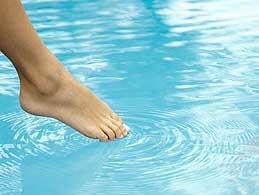 appointment option:
appointment option:
- I can schedule you today at 3 p.m. for a deep tissue session. We can do an hour or 90 minutes…?
Are you way too busy today? Offer advice on getting an appointment at another time.
- I can usually get people in with a few days notice. What about this time later this week?
Showing potential clients around, answering a few questions and being friendly can turn the walk-in prospect into a client. Try it. It works!
After all, the walk-in client is there because they want a massage.
Massage Hygiene and the Return Visit
People who give massages hopefully like receiving massages. I know I do. When my therapist friends are out of town or otherwise engaged, I have a few places I will slip into to try their hands.
I found one therapist purely by chance who really knows how to do meridian and nerve-based massages, something my low back appreciates greatly. So I was surprised when I got into the shower one day a few hours after my massage and found large, red welts on my back, suggesting that I had teenage cystic acne.
In the mirror I saw big, red and itchy bumps all over my back, especially on the lines of the sideline meridians. I had either had a reaction to the massage oil or somehow some sort of bacteria had been introduced into the skin during the massage.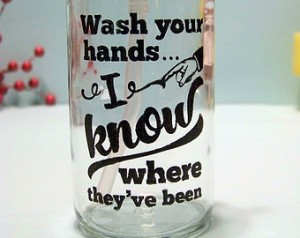
I thought, probably like many clients, that I should simply not visit this therapist again. Something had been dirty, the oil, the bottle, the hands, something. I had showered just before the massage, so I did not think it was my skin. Oh well.
Then perhaps, like some clients, I though about the affection I had developed for this particular therapist. I liked her style and her results. I decided to see her again and tell her about my reaction.
Once we were alone in the massage room, I explained that I had some sort of reaction to the massage and had been nursing the bumps with arnica and witch hazel. I showed her the pattern on my back. She looked stunned.
“But I always wash my hands, and I make sure the linens are clean and fresh.” she said. I pointed at the oil bottle. “Do you wash it? Wipe it? Does anyone else use it?”
Hmm. That was possible, she said.
As massage therapists we see a lot of people and often use the same bottles and oils on each client. Can someone have sensitive skin? Sure. But what if it was the oil layer on the outside of the bottle? What if the oil itself was contaminated with bacteria?
No sure answers there. But here are the basics of keeping clean between massages and during successive massages in a busy practice or clinic.
- Always wash hands after and before a session. Washing hands at the end of a session is a half-measure. You will handle materials, perhaps dirty linens, doorknobs, credit card machines, etc. before your next massage. Wash hands again before you start.
- Wash the exterior of your oil bottle as well, especially if someone else is using your room and supplies on your days off. Slick bottles can transfer bacteria to all of your clients that day and beyond. I wash oil bottle every day and use anti-bacterial wet wipes to clean bottles between clients.
- Never stack linens for more than one client. Some therapists think they have found a great way to avoid scrambling for linens by putting five or six settings on the table. Well, no certain infections, such as scabies, can be passed from one sheet to another. You don’t want to be explaining your timesaving system to an inspector from the health department.
- Hand washing is done with warm to hot water and soap and requires rubbing both hands together for at least 15 seconds. Rinsing, one-handed washings, or other half-measures don’t count. Over the years I have learned to follow-up my hand washing with a cold-water rinse. Good for my poor paws.
- When using a jar or tub of massage cream, use a clean or disposable spatula to scoop from the jar. If you stick your fingers in the jar, you are cross-contaminating any bacteria to your whole client book for that day and as long as you use that jar. Cover the jar in between scoops. Better yet, use oil with a pump or flip-top.
- Use cleaning cloths with hot water and a cleanser or anti-bacterial wet wipes on common surfaces such as towel warmers, crock pots, essential oil bottles, anything in the room that might be touched by oily hands. If you only clean when it is slow, or you rely on a cleaning crew for these details, you may be spreading bacteria and other germs.
- Some massages start with a foot massage, either because of the client’s symptoms, wishes or the therapist’s training. Tell your client as you finish their feet you are going to wash your hands and will be back in a moment. Some people have fungal infections, bacteria, etc., or go barefoot, and your foot massage can spread skin infections to other areas of the body.
Better safe than sorry. By the way, I decided to stick with my therapist, largely because she was concerned and eager to learn how to prevent more skin reactions. Just like a client, I appreciated her attitude and its promise for future reaction-free massages. Cleanliness fills your book.
